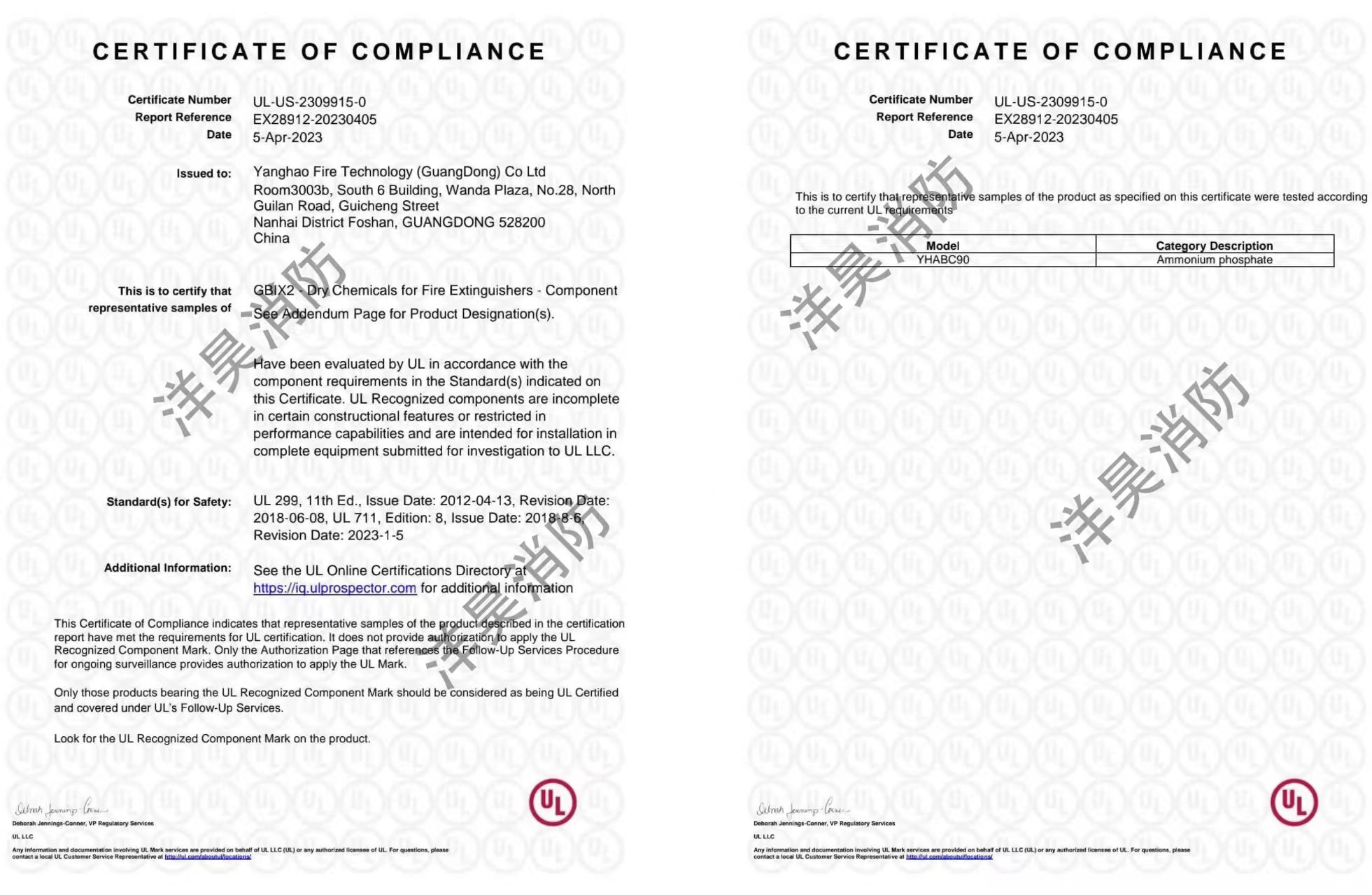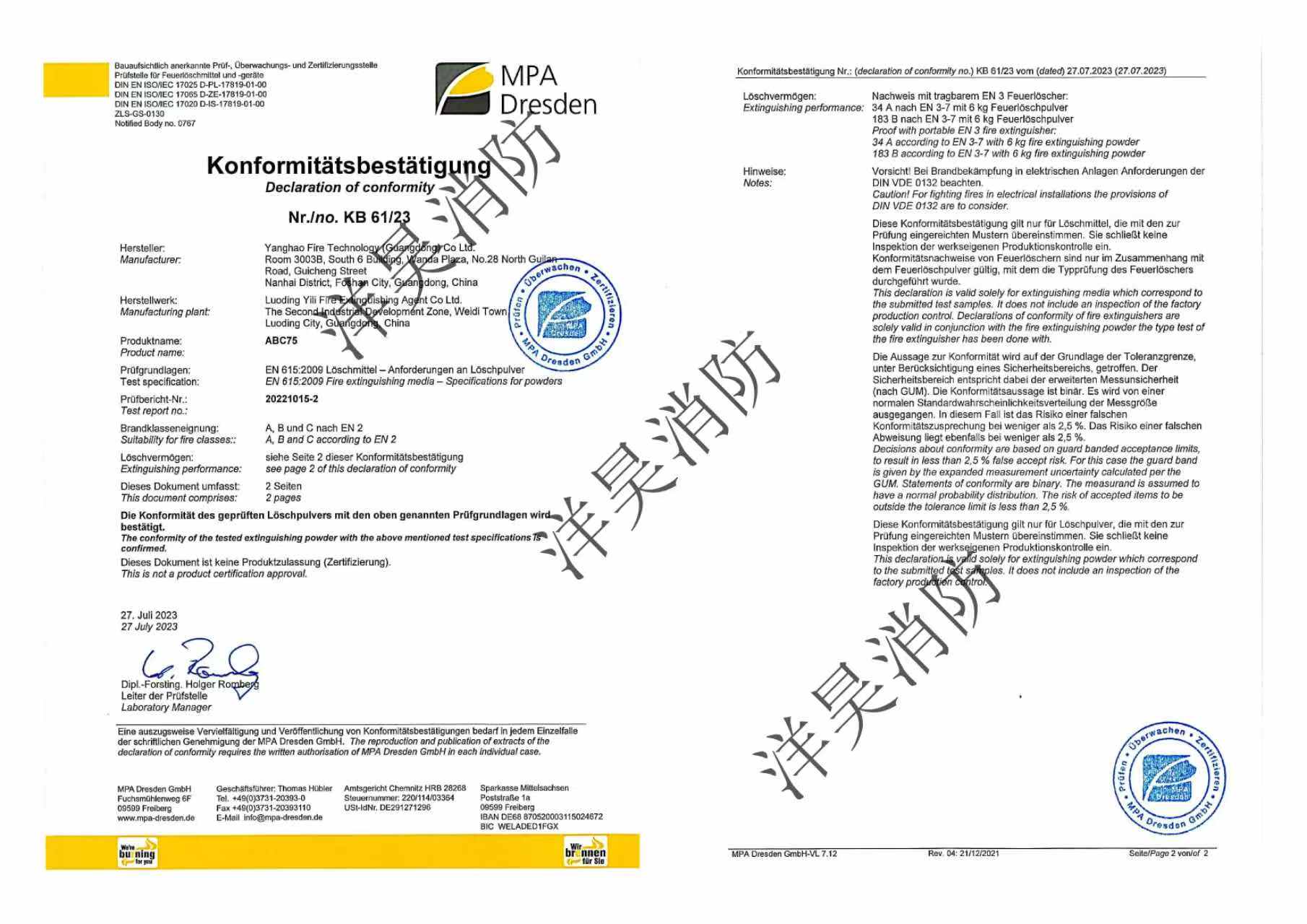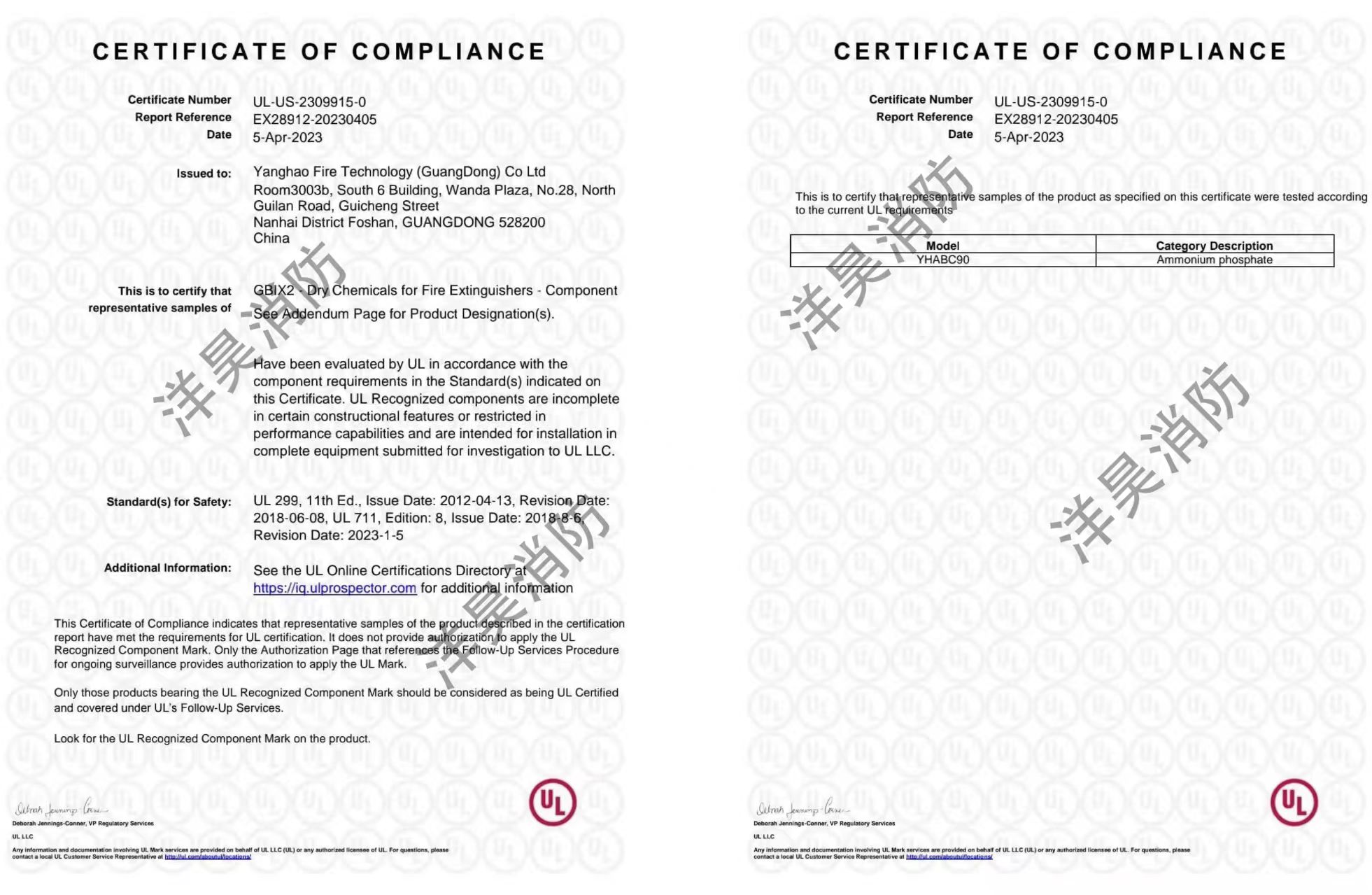Dry Powder Fire Extinguisher Procurement Guide: How UL Certification Reduces 30% Customs Clearance Risks?
Introduction: Why UL Certification Matters in Global Trade
The global demand for dry powder fire extinguishers has surged due to stricter industrial safety regulations. However, 30% of cross-border shipments face delays or rejections due to non-compliance with safety standards, particularly in markets like the U.S. and Europe. Among these challenges, UL certification emerges as a critical tool to mitigate risks. While not legally mandatory in the U.S., UL certification acts as a facto "market passport"—ensuring smoother customs clearance, platform approvals (e.g., Amazon), and buyer trust. This guide explores how UL certification streamlines procurement, reduces costs, and safeguards your supply chain.
Section 1: Understanding UL Certification vs. UL Report
1.1 What is UL Certification?
UL (Underwriters Laboratories) is a globally recognized safety science organization. UL certification involves rigorous testing, factory audits, and annual reviews to verify product safety. Certified products can display the UL Mark, signaling compliance with standards like UL 711 (fire extinguishing agent) and UL 299 (performance testing).
1.2 UL Report ≠ UL Certification
Many suppliers confuse UL reports (test-only documents) with UL certification:
Criteria | UL Report | UL Certification |
UL Mark Usage | ❌ Not allowed | ✅ Authorized |
Factory Audits | ❌ Not required | ✅ Mandatory |
Cost | $4,000–$12,000 (one-time) | $20,000+ (with annual fees) |
Best For | B2B clients, e-commerce | Retail chains, branded sales |

Section 2: How UL Certification Reduces Customs Risks
2.1 Compliance with "Invisible" Market Requirements
Although UL certification is non-mandatory under U.S. law, customs agents and platforms like Amazon enforce it as a facto requirement:
- Amazon’s 2024 Crackdown: Over 1,000 listings for battery-powered devices were removed for missing UL certification.
- Insurance Demands: Insurers often reject claims for uncertified products involved in accidents.
2.2 Avoiding Common Customs Pitfalls
- Documentation Gaps: UL certification simplifies paperwork (e.g., MSDS, UN38.3) required for hazardous material shipping.
- Labeling Errors: Products without the UL Mark may face delays for "suspicious safety claims".
2.3 Case Study: 30% Risk Reduction in Practice
A German automotive parts supplier reduced customs delays by:
1. Upgrading from UL reports to full certification.
2. Training staff on UL Mark placement and documentation.
3. Partnering with UL-audited logistics providers.
Result: Customs clearance time dropped from 14 to 5 days, saving $15,000/month.
Section 3: Step-by-Step Guide to Obtaining UL Certification
3.1 Pre-Certification Preparation
- Identify Applicable Standards: For dry powder extinguishing agents, focus on UL 299 (performance) and UL 711 (safety).
- Documentation: Submit product schematics, BOM lists, and safety manuals.
3.2 Testing and Factory Audits
- Lab Testing: Samples undergo fire suppression efficiency, corrosion resistance, and environmental tests.
- Factory Inspection: UL auditors verify production consistency and quality controls.
3.3 Cost and Timeline Optimization
| Stage | Duration | Cost Range |
| Testing | 4–6 weeks | $8,000–$15,000 |
| Certification | 8–12 weeks | $20,000–$50,000 |
| Annual Maintenance | Ongoing | $5,000–$10,000/year |
 |  |
Section 4: Common Misconceptions and Solutions
4.1 Myth: "UL Certification Is Only for Large Enterprises"
- Reality: SMEs can leverage modular certification programs. For example, focus on **critical components** (e.g., extinguisher valves) first.
4.2 Myth: "Customs Clearance Guarantees Market Success"
- Reality: Retailers like Walmart require UL Marks for shelf placement. Without certification, post-clearance sales may stall.
4.3 Solution: Hybrid Compliance Strategies
- Combine UL certification with CE Marking (EU) or FM Approval (industrial insurance) for multi-market access.
Section 5: Future Trends and Proactive Measures
5.1 Rising Demand for Eco-Certifications
- EU’s 2024 Carbon Footprint Rule: UL-certified extinguishers must now disclose CO₂ emissions data.
- Green UL Marks: Emerging standards for biodegradable extinguishing agents.
5.2 Digital Tools for Compliance Management
- Use UL’s SPOT Database to verify certification status globally.
- Implement IoT sensors to monitor storage conditions (temperature, humidity) and prevent UL violations.
Conclusion: UL Certification as a Strategic Investment
UL certification is not merely a compliance checkbox—it’s a competitive differentiator. By reducing customs risks by 30%, enhancing buyer trust, and future-proofing against regulatory shifts, it delivers ROI far beyond initial costs. For procurement managers, prioritizing UL-certified suppliers ensures resilience in an increasingly regulated global market.

